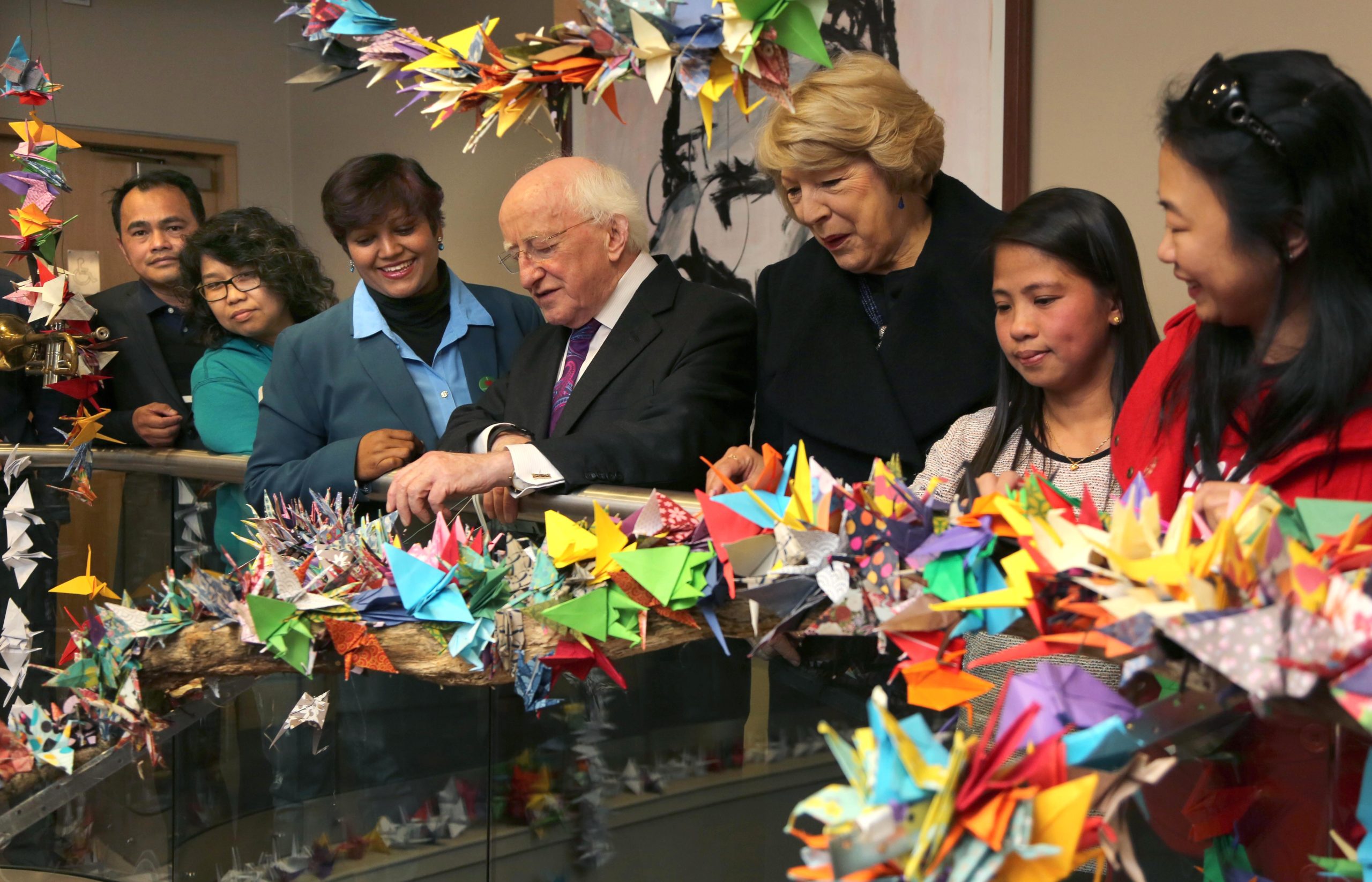Today (1st December), President Michael D Higgins, on his way to another event, called to Liberty Hall Theatre to meet with undocumented migrants living in Ireland and to visit their origami installation.
The ‘A Thousand Reasons, One Wish’ installation was inspired by a Japanese legend which states that anyone who folds a thousand paper cranes is granted one wish. To create the installation, undocumented workers, families and children across Ireland folded hundreds of brightly-coloured origami cranes, all in the hope of being granted their wish – a pathway to papers.
Jason Montenegro, undocumented worker and Justice for the Undocumented spokesman said “We are delighted that President Higgins could find time in his very busy schedule to meet us today. His presence here means so much to us; he has a deep understanding of our lives as undocumented people in Ireland.”
Montenegro continued “There are a thousand reasons to regularise undocumented migrants in Ireland; our wish is just to be given a chance. We are part of this community, working, paying taxes and contributing for many years. We are the very same as the Irish undocumented in America.”
Edel McGinley, MRCI Director, said “Many Irish people know the pain of separation from undocumented loved ones. President Higgins’ support gives much-needed hope at this time to undocumented people – workers, families, children and young people who live in fear.”
NOTES
The installation is comprised of over a thousand paper cranes and is titled A Thousand Reasons, One Wish to reflect the fact that there are a thousand reasons why regularisation (a pathway to papers) makes sense for undocumented migrants, for communities across Ireland and for the State itself. It was launched yesterday by artists Robert Ballagh and Jim Fitzpatrick. The installation is the work of MRCI’s Justice for the Undocumented campaign group – made up of 1,500 undocumented migrants living and working in Ireland – and Young, Paperless & Powerful, a campaign group for undocumented young people between the ages of 14-23. Installation design by artist Lisamarie Johnson.
The undocumented in Ireland are the same as the Irish undocumented in America: most were once documented (as students, workers or tourists) and have become undocumented. According to MRCI’s survey of over 1,000 undocumented migrants, 89% are working, 84% have been here for over 5 years, and 21% are here over 10 years. Many are paying taxes, all are contributing to the Irish economy and to Irish communities. Contrary to popular belief, they have no access to social welfare of any kind. Many are afraid of any contact with the authorities, and so do not go to the Gardaí when they are victims of even the most violent of crimes. MRCI estimates that there are between 2,000-5,000 undocumented children and young people in Ireland today, and between 20,400-25,500 undocumented adults.
There is currently no way for most to become documented again, which is why MRCI and Justice for the Undocumented are calling for the introduction of a regularisation scheme: a straightforward, transparent path to papers which would allow undocumented to come forward, formally apply for papers, and be assessed on a case-by-case basis. Irish politicians have lobbied for similar solutions for the undocumented Irish in the US.
President Higgins has previously spoken about this inconsistency, saying “Given how great a concern the treatment of our undocumented citizens abroad has been to our representatives and to our communities over the past decades, I believe that we should now move beyond rhetoric and establish a meaningful connection and consistency between our own history of emigration and the contemporary challenges facing migrants living in Ireland.” and noting of the undocumented that “These people often live in the shadows, under tremendous stress and fear.”


